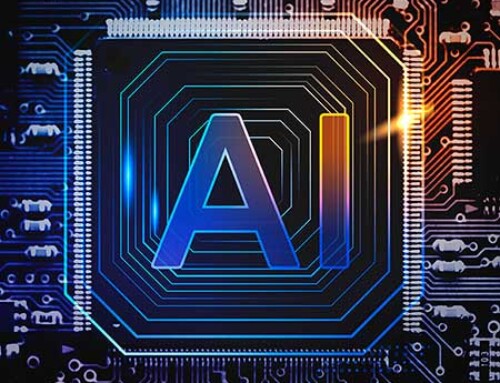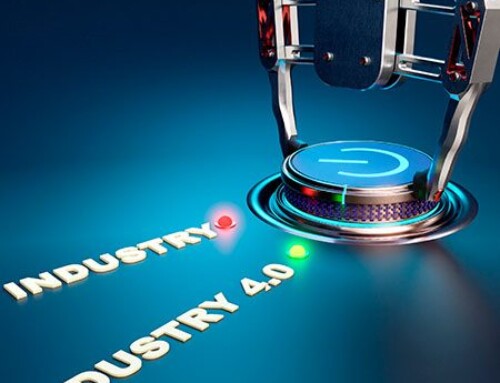22/08/2024
Artificial Intelligence (AI) has been heralded as a transformative force in the business world, promising increased efficiency, enhanced decision-making, and unprecedented innovation. However, as AI technologies mature and become more widespread, it's crucial to critically examine their actual impact and value creation in business contexts. In this article, we dive into the nuanced reality of AI in business, addressing both its potential and limitations, with a particular focus on how it affects human behavior and interaction in the workplace.
DOES AI CREATE NECESSARY BUSINESS VALUE?
The question of whether AI creates necessary business value is complex and multifaceted. While AI undoubtedly offers significant potential, its actual value creation depends on various factors:
- Improved Efficiency and Productivity: AI can significantly enhance operational efficiency by automating routine tasks and processes. For example, in manufacturing, AI-powered robots can work alongside human workers, handling repetitive or dangerous tasks with greater speed and precision. This allows human workers to focus on more complex, value-added activities.
Global example: Amazon's use of AI-driven robots in its warehouses has reportedly cut operating expenses by about 20%, significantly reducing the time it takes to fulfill orders.
European example: Siemens, the German industrial manufacturing giant, has implemented AI in its gas turbine factories. Their AI system optimizes the manufacturing process by predicting potential issues and suggesting improvements, resulting in a 30% reduction in production time and significantly improved quality control. - Enhanced Decision-Making: AI algorithms can process vast amounts of data quickly, providing insights that can inform better business decisions. This is particularly valuable in fields like finance, where AI can analyze market trends and risk factors faster and more accurately than humans.
Global example: JPMorgan Chase's COIN (Contract Intelligence) program uses machine learning to interpret commercial loan agreements. It completes in seconds what previously took lawyers and loan officers 360,000 hours annually.
European example: ING, the Dutch multinational banking group, uses an AI system called Katana to assist its bond traders. Katana analyzes vast amounts of market data to provide traders with investment recommendations, leading to a 25% increase in trading performance. - Personalized Customer Experiences: AI enables businesses to offer highly personalized products and services, potentially increasing customer satisfaction and loyalty.
Global example: Netflix's recommendation system, powered by machine learning algorithms, is a prime example of how AI can enhance user experience and drive engagement.
European example: Zalando, the German e-commerce company, employs AI algorithms to provide personalized fashion recommendations to its customers. This AI-driven approach has contributed to a 20% increase in customer engagement and higher conversion rates. - Innovation and New Business Models: AI can drive innovation by enabling new products, services, and business models. For instance, AI-powered predictive maintenance in industries like aviation and manufacturing can significantly reduce downtime and maintenance costs.
Global example: General Electric uses AI for predictive maintenance in its wind turbines, reducing downtime by up to 20% and increasing energy production.
European example: Babylon Health, a UK-based healthcare technology company, has developed an AI-powered chatbot for medical consultations. The system can assess symptoms, provide health information, and triage patients. It's now used by several health services across Europe, improving access to healthcare and reducing pressure on traditional medical services.
However, the value creation of AI is not guaranteed and comes with several caveats:
- Implementation Challenges: Many businesses struggle with AI implementation due to lack of expertise, data quality issues, or integration difficulties with existing systems.
- Return on Investment (ROI): The high costs associated with AI development and implementation can make it challenging to achieve a positive ROI, especially for smaller businesses.
- Ethical and Legal Considerations: AI use raises essential ethical and legal questions, particularly around data privacy and algorithmic bias, which can potentially negate its business value if not adequately addressed.
HUMAN BEHAVIOR AND INTERACTION IN THE AGE OF AI
The integration of AI into business processes inevitably impacts human behavior and interaction in the workplace. This impact is multifaceted and not always straightforward:
- Changing job roles and skill requirements: As AI takes over routine tasks, human workers are increasingly required to develop new skills and adapt to changing job roles. This shift emphasizes uniquely human capabilities such as creativity, emotional intelligence, and complex problem-solving.
Global example: In customer service, AI chatbots handle routine inquiries, allowing human agents to focus on more complex customer issues that require empathy and nuanced communication.
European example: Adecco Group, the Swiss human resources company, has launched its 'Future@Work' strategy, which includes significant investment in AI-related training for both its employees and clients. This initiative aims to prepare the European workforce for the changing nature of jobs in the AI era. - Human-AI Collaboration: Rather than replacing humans, AI often works best in partnership with human workers. This human-AI collaboration can lead to outcomes that surpass what either could achieve alone.
Global example: In healthcare, AI-assisted diagnosis tools help doctors identify diseases more accurately. A study in The Lancet Digital Health found that an AI system was more accurate than human radiologists in identifying breast cancer from mammograms when used as a second reader.
European example: Airbus, the European aerospace corporation, uses AI in its aircraft design process. Their AI system, called ANSYS, works alongside human engineers to optimize aircraft designs for fuel efficiency and performance. This collaboration has led to innovations like the wing design of the A350 XWB, which offers 25% better fuel efficiency compared to its predecessors. - Impact on Workplace Communication and Dynamics: AI tools can significantly alter how teams communicate and collaborate. For instance, AI-powered project management tools can streamline workflows and facilitate more efficient communication. However, this may also lead to reduced face-to-face interaction and potential loss of nuanced, informal communication.
European example: SAP, the German software corporation, has developed an AI-powered digital assistant called CoPilot. This tool integrates with SAP's business software to help employees automate routine tasks, find information quickly, and make data-driven decisions. While enhancing productivity, it also changes how employees interact with data and each other. - Psychological and Emotional Impact: The increasing presence of AI in the workplace can have psychological effects on workers. Some may experience anxiety about job security or feel pressure to compete with AI systems. Conversely, others may feel empowered by AI tools that enhance their capabilities.
Global example: A survey by Oracle and Future Workplace found that 64% of people trust a robot more than their manager, highlighting both the potential and the challenges of integrating AI into workplace dynamics.
European example: A study conducted by the European Commission's Joint Research Centre found that 74% of European workers believe AI will steal more jobs than it creates. This perception highlights the need for companies to address employee concerns and manage the psychological impact of AI integration. - Ethical Decision-Making and Accountability: As AI systems become more involved in decision-making processes, questions arise about accountability and the role of human judgment in ethical dilemmas. This necessitates a careful balance between leveraging AI capabilities and maintaining human oversight.
European example: Axon, a global company with significant operations in Europe, faced ethical questions when it proposed developing AI-powered facial recognition for police body cameras. After consultation with its AI ethics board, the company decided not to proceed with the technology due to concerns about privacy and potential misuse.
A BALANCED APPROACH TO AI IN BUSINESS
Rethinking AI in the context of business requires a nuanced understanding of its potential benefits and limitations. While AI can indeed create significant business value through increased efficiency, enhanced decision-making, and innovation, its success depends on thoughtful implementation that considers the broader impact on human workers and organizational dynamics.
The key to maximizing AI's potential lies in viewing it not as a replacement for human capabilities but as a powerful tool that can augment and enhance human skills. Businesses that can successfully navigate the integration of AI while fostering a culture of continuous learning and adaptation among their workforce are likely to reap the most significant benefits.
As we move forward, businesses must approach AI adoption with a strategic mindset, carefully evaluating where AI can genuinely add value and how it can be implemented in ways that empower rather than alienate human workers. Only through this balanced approach can businesses fully harness AI's transformative potential while maintaining the irreplaceable value of human creativity, empathy, and judgment.
The experiences of companies worldwide, from Amazon and JPMorgan Chase to European leaders like Siemens, ING, and Airbus, offer valuable lessons on harnessing the power of AI while maintaining a human-centric approach to technological adoption. As businesses continue to navigate the AI landscape, they must balance innovation with ethical considerations, particularly given the increasing focus on data protection and AI regulation globally and especially in regions like Europe.



